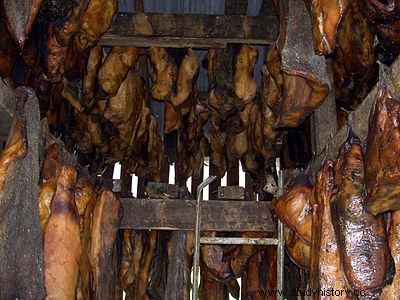
The Vikings were reputed to be partiers who liked to gorge themselves on food and drink beer and mead, but the Nordic diet was richer than most people think. They had a varied diet, rich in grains, fruits, meat from animals raised for slaughter, fish, also from prey killed in hunting and even beached whales and this was all much better than other contemporary peoples in Europe had. P>
In addition to documentary records, researchers have found traces of Viking nutrition in bones, ancient sewer systems and rubbish waste. They found that they were also afflicted with worms and food poisoning from consuming inappropriate or contaminated items.
As meat was very present in Viking meals, they kept various animal herds for food, especially cattle, goats, sheep and also horses, chickens, ducks and geese to obtain of meat and eggs was another rich nutritional source also produced on Viking farms. Through hunting, an equally large variety of animals provided plenty of meat, with elk and wild boar being the most prized prey (although they did not dispense with small prey such as rabbits or squirrels). Fishing in the Baltic Sea and the Atlantic Ocean they obtained cod, mackerel, haddock and several other species, but they also had multiple options in the rivers. More special dishes featured seals and porpoises (a close relative of dolphins). Meat conservation methods were done through dehydration processes, pickling (removal of surface layers of dried meat), fermentation and smoking or simply packing the food in the winter ice.
Vegetable consumption was intense and they had an infinity of options of fruits, vegetables and vegetables, in addition to the important grains for the production of a significant part of the food base, but above all for beer production. They cultivated in beds or in gardens on farms and also practiced collecting vegetables in the wild.
As the Vikings went beyond Scandinavia they also came across new agricultural crops, condiments, preparations and flavors.
